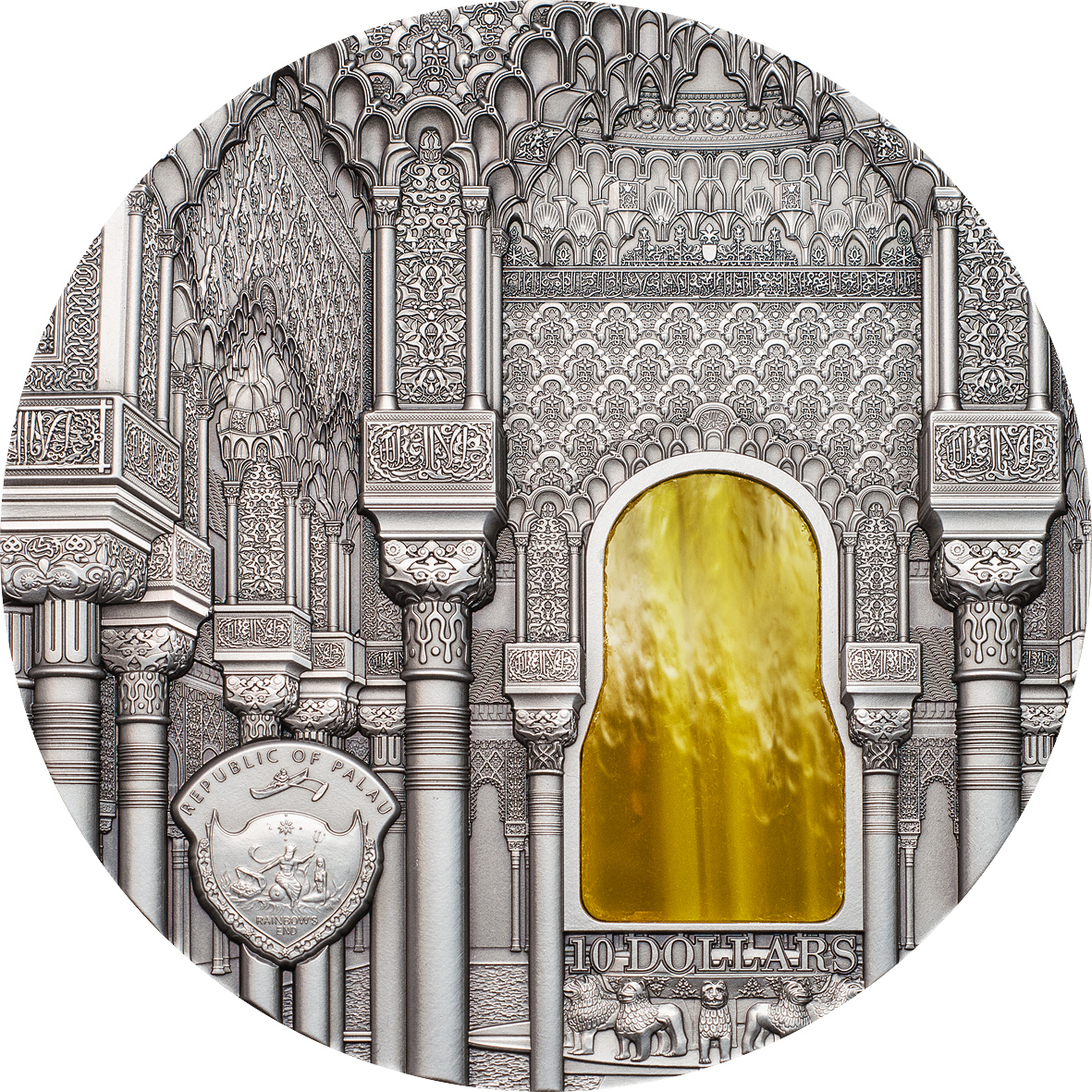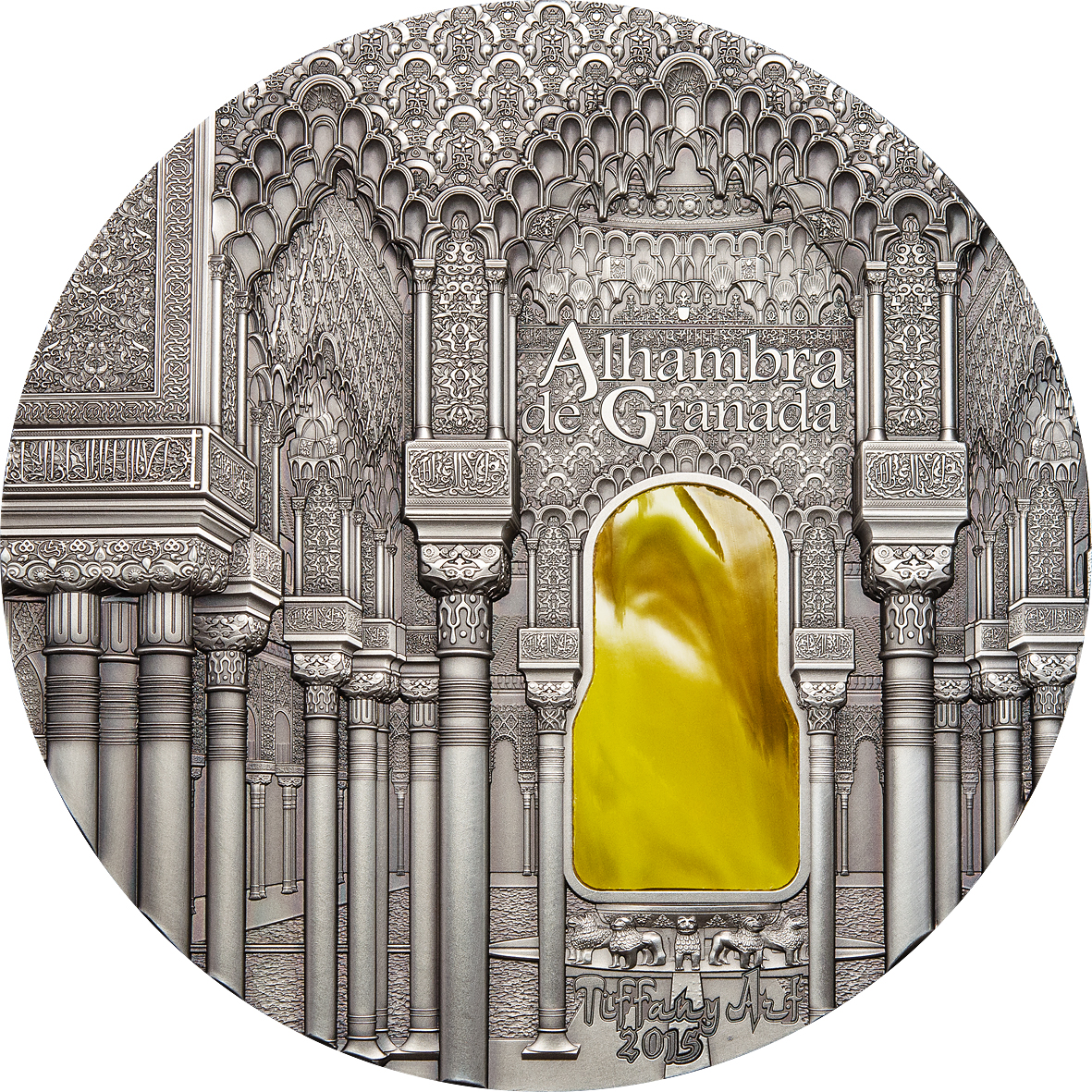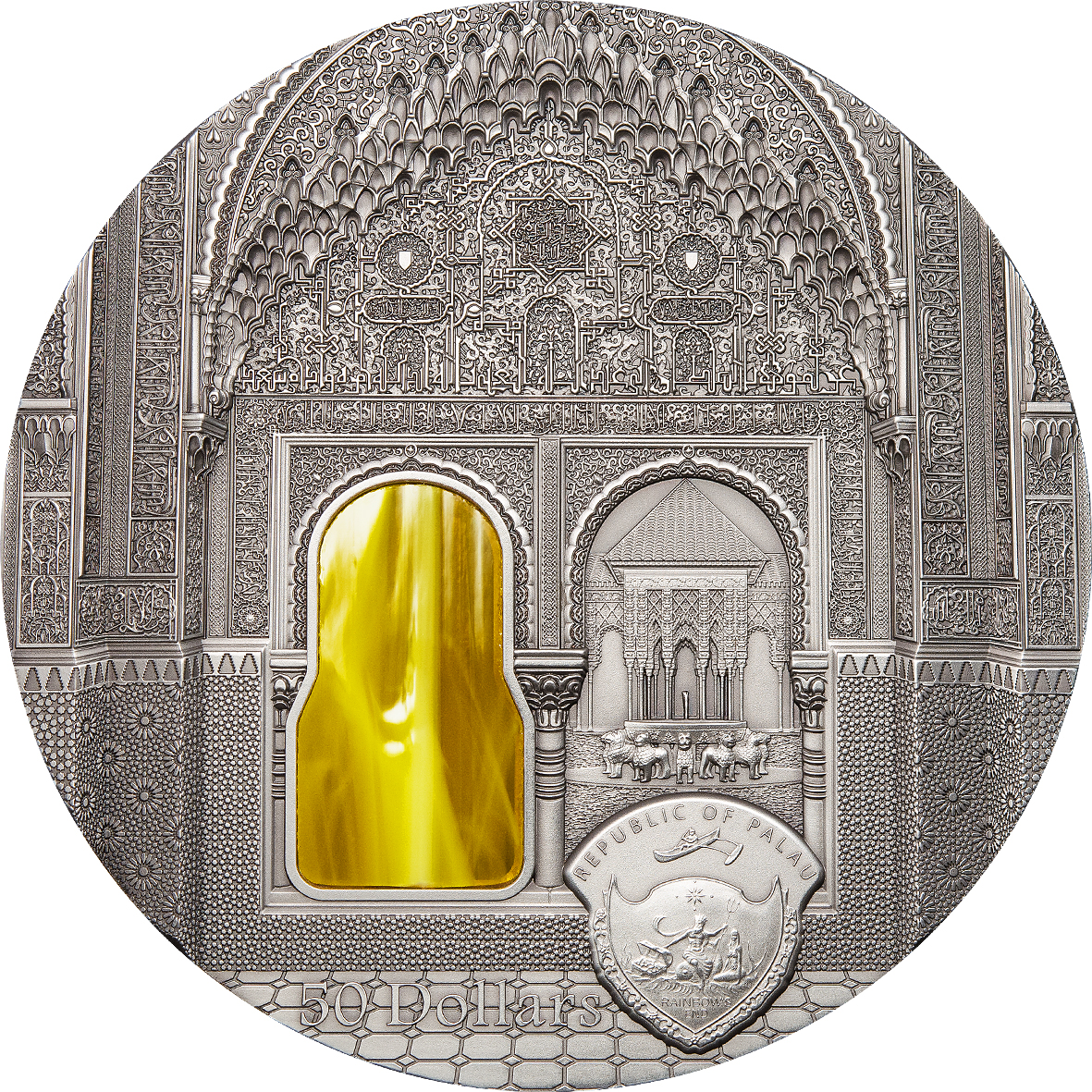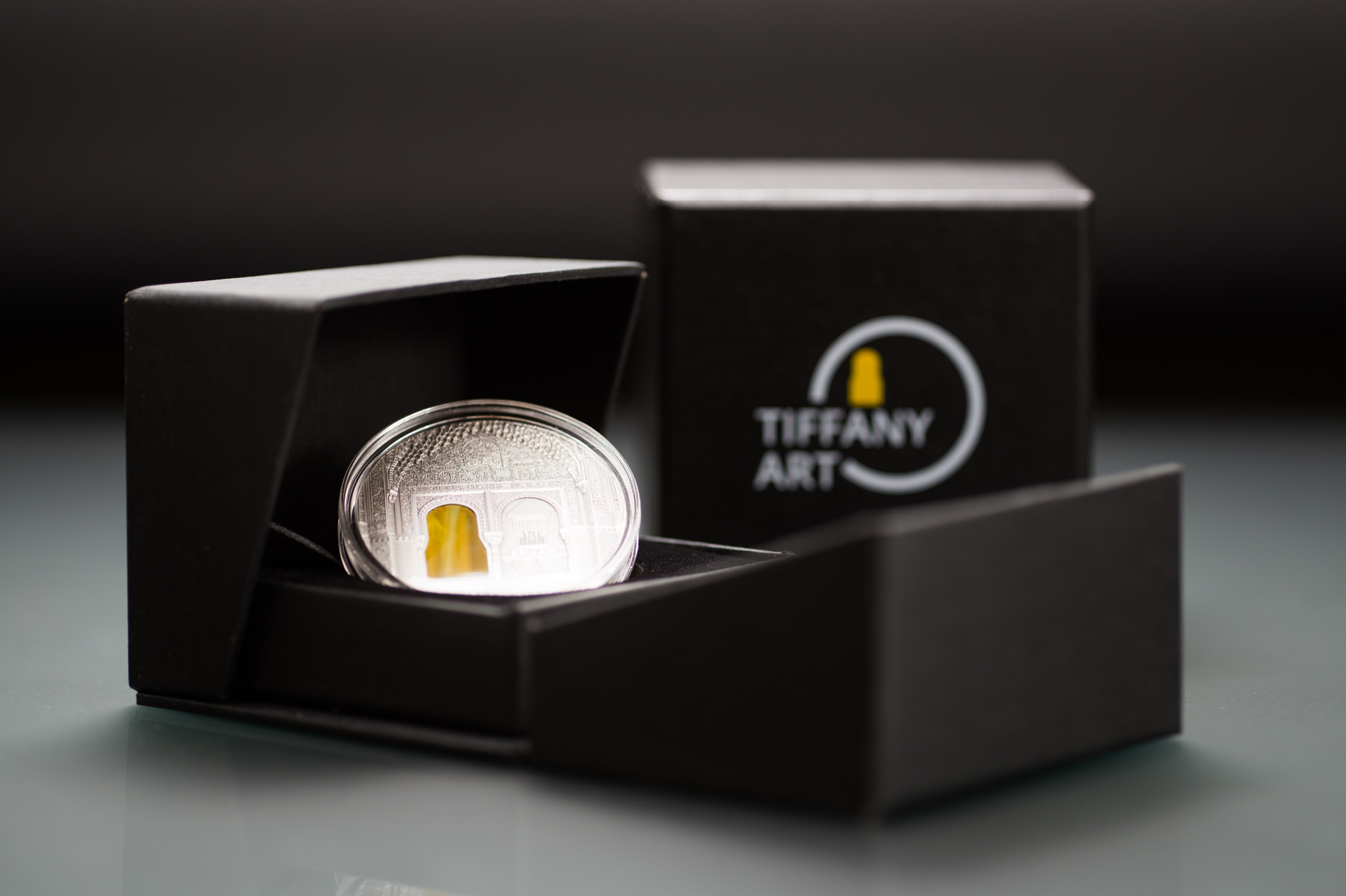It’s time for the World Money Fair in Berlin and so it’s time for the latest in Coin Invest Trust’s massively respected and multi award-winning ‘Tiffany Art’ series of Art-Architectural coins to put in an appearance. One of the very few series of coins to successfully appreciate heavily in value AND maintain it in the long term, it’s safe to say that this latest entrant in the series, the 11th, will find as welcoming a reception as those that have gone before.
It’s good to see that after a first appearance last year for the tenth anniversary of the series, a kilogram version of the coin is to be released with the same tiny mintage of just 99 pieces. Hopefully this will mean it’s now an accepted part of CIT’s annual release schedule because they really are quite stunning numismatics. It’s also great to see that proper packaging for both versions is carried on, as prior to 2014 the coin was provided in a capsule with a small certificate in a little plastic bag; not what you’d expect for a €400+ coin and a disservice to the designers. Fortunately it’s of a suitably high standard now.
Shown in finished form last weekend in Berlin, we’ve got a video lower down of the kilo. There are no changes to the specifications and rather than regurgitate the same information again, just head on over to our Tiffany coin series profile to see the whole range starting in 2004; it’s a great read.
Prices will likely debut at €400-500 for the two-ounce, and €6,000+ for the kilo, both too high in our opinion given the vastly increased quality of the competition, like the sublime Taj Mahal, the beautiful Secrets of Pena, and the superb Mesopotamia. That isn’t the fault of CIT however. In our view some dealers are playing a risky game with the heavy initial prices of these. CIT’s equally excellent Mongolian Wildlife series has suffered heavy drops in value recently because debut prices rose so high that collectors seem to have decided money was better spent elsewhere. I recently purchased a 2014 Manul for just £88. A 2013 coin was double that and even those have softened. The first Gulo coin is struggling at half the price it was just 18 months ago. Tiffany has so far proven resistant, likely because of the very limited mintage,but how long that will continue is up to the good graces of the collector. This series, like the Mongolian one, deserves to just run and run; they really are exceptional coins fully deserving of their reputation. This years Islamic “Nasrid” architecture entrant is another great, especially the kilo. If you like this style of coin, and we definitely do, it’s clear that CIT aren’t giving up their crown without a fight and that’s great for us.
THE TWO OUNCE 2015 TIFFANY COIN
Alhambra the complete form of which was Calat Alhambra, is a palace and fortress complex located in Granada, Andalusia, Spain. It was originally constructed as a small fortress in 889 and then largely ignored until its ruins were renovated and rebuilt in the mid-11th century by the Moorish emir Mohammed ben Al-Ahmar of the Emirate of Granada, who built its current palace and walls. It was converted into a royal palace in 1333 by Yusuf I, Sultan of Granada.
Completed towards the end of Muslim rule of Spain by Yusuf I (1333–1353) and Muhammed V, Sultan of Granada (1353–1391), the Alhambra is a reflection of the culture of the last centuries of the Moorish rule of Al Andalus, reduced to the Nasrid Emirate of Granada. It is a place where artists and intellectuals had taken refuge as the Reconquista by Spanish Christians won victories over Al Andalus. The Alhambra integrates natural site qualities with constructed structures and gardens, and is a testament to Moorish culture in Spain and the skills of Muslim, Jewish, and Christian artisans, craftsmen, and builders of their era. The literal translation of Alhambra, “the red (female),” reflects the color of the red clay of the surroundings of which the fort is made.
The Court of the Lions (Patio de los Leones) is an oblong courtyard, 35m in length by 20m in width, surrounded by a low gallery supported on 124 white marble columns. A pavilion projects into the court at each extremity, with filigree walls and a light domed roof. The square is paved with coloured tiles and the colonnade with white marble, while the walls are covered 1.5m up from the ground with blue and yellow tiles, with a border above and below of enamelled blue and gold. The columns supporting the roof and gallery are irregularly placed. They are adorned by varieties of foliage, etc.; about each arch there is a large square of stucco arabesques; and over the pillars is another stucco square of filigree work.
In the centre of the court is the Fountain of Lions, an alabaster basin supported by the figures of twelve lions in white marble, not designed with sculptural accuracy but as symbols of strength, power, and sovereignty. Each hour one lion would produce water from its mouth. At the edge of the great fountain there is a poem written by Ibn Zamrak. This praises the beauty of the fountain and the power of the lions, but it also describes their ingenious hydraulic systems and how they actually worked, which baffled all those who saw them. (Source: Wikipedia)
THE ONE KILOGRAM 2015 TIFFANY COIN
MINTS DESCRIPTION
The Alhambra in Granada is a stone carved manifesto of Arabian rule in Spain and is one of the most beautiful examples of Islamic architecture.
After the conquest of Granada in 1237 Sultan Mohammed I laid the foundation stone for his new manor and his own dynasty. Subsequently, the Nasrid family ruled the Emirate up until the fall of Granada in 1492 and continuously expanded the Alhambra into a complex citadel. Beside the ruler’s throne and the private chambers it also includes the mosque, government and Administration buildings as well as enchanting courtyards and gardens.
The Courtyard of the Lions (Patio de los Leones) impressively shows the typical Nasrid style, abundancy of decorative elements: pillars, arches, arabesques, inscriptions and the pointed stalactite alcoves named Muqarnas. With good reason the poet Ibn Zamrak’s inscription on the fountain’s edge reads: “Blessed is the eye that sees this garden of beauty”.
| SPECIFICATION | ||
|---|---|---|
| DENOMINATION | $10 PALAU | $50 PALAU |
| COMPOSITION | 0.999 SILVER | 0.999 SILVER |
| WEIGHT | 62.2 g | 1,000 g |
| SIZE | 50.0 mm | 100.0 mm |
| FINISH | ANTIQUE | ANTIQUE |
| MINTAGE | 999 | 99 |
| BOX / COA | YES / YES | YES / YES |








Where I can purchase this two ounce and one kilogram silver proof coins? Which coin store sell these coins?
Try one of the many European dealers like Top World Coins, Numiscollect, Powercoin etc. German dealers in particular seem to get them regularly and virtually all these stores have a strong eBay presence.
The Tiffany coins usually come out around March/April I believe. is that your understanding for the new one, Mik? this is an extraordinary design even by their standards.
It is Louis. The coins and packaging shown in Berlin were complete and finished items, so it’s just a case of getting the German Mint to strike them and then get them distributed.
Honestly? This series has never really done much for me. However . . this is STUNNING!